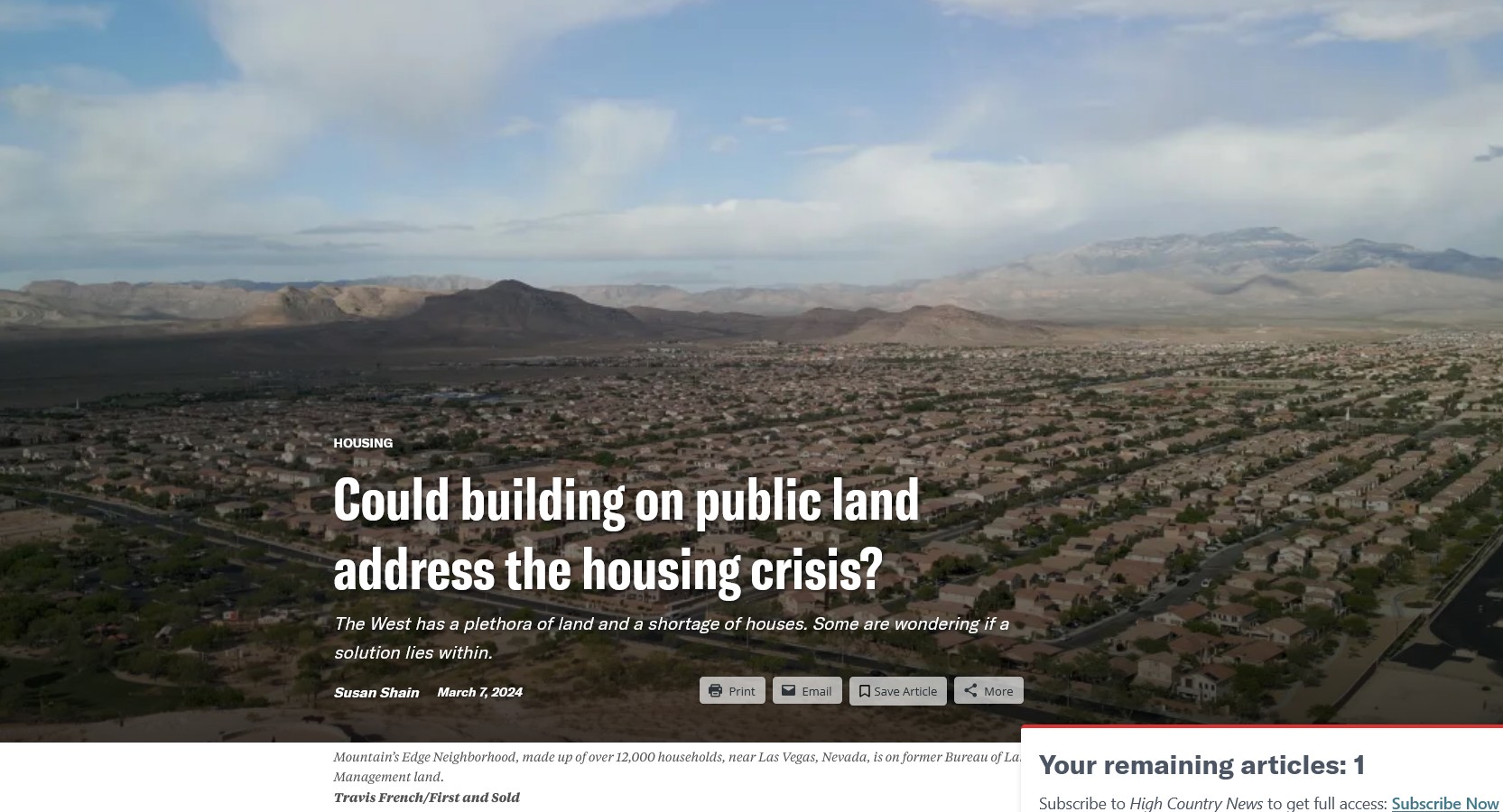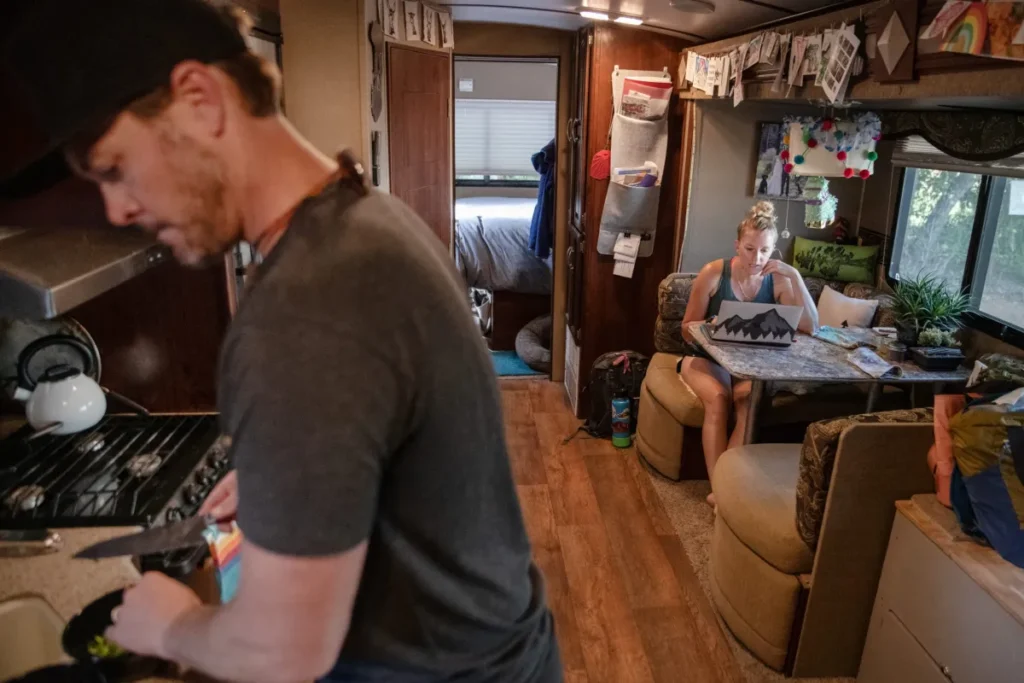Thanks to the Center for Western Priorities for this one.
Here’s the link to this story. No paywall. Also note that the partners helping (mentioned here) are the oft-maligned off-roaders. I wonder if the Conservation Lease program would allow for leasing these areas and the lessee being responsible for trash removal and law enforcement?
***************
PORTLAND, Ore. (KOIN) — Hover over the Redmond Municipal Airport on Google Maps and scroll north of the Ochoco Highway. From a distance, the parcels of public land look like undisturbed patches of Oregon’s high desert: Western juniper trees scattered between brown and green tufts of bunchgrass and sagebrush set in the rain shadow of the High Cascades.
But zoom in on the desert plains east of Redmond and satellite images reveal hundreds of acres of trash and dozens of makeshift neighborhoods of trailers, motorhomes and junked cars. This property, whose ownership is divided between Deschutes County and the Bureau of Land Management, is an example of the countless parcels of Oregon’s public land where homeless people are taking refuge in violation of local and federal laws.
Depending on the jurisdiction, the enforcement of these laws falls to the Bureau of Land Management — which is part of the U.S. Department of the Interior — the state, or to county and city law enforcement. The added expense of removing the trash left behind at these locations can also cost these government agencies hundreds of thousands of dollars.
BLM spokesperson Samantha Ducker told KOIN 6 News that the federal agency, which owns about 25% of Oregon, knows that people are living and dumping on public lands. While the public is encouraged to camp on BLM land, BLM regulations prohibit people from camping in an area for more than 14 days. Once the two-week limit is reached, campers are required to move 25 miles away from their previous campsite. If people remain in the area past the deadline, BLM Law Enforcement officers can issue a $250 fine. But with 25 law enforcement officers and five special agents employed across the entire state, BLM officers are overwhelmed by the number of illegal long-term campsites in Oregon.
“The BLM is experiencing many problems with unauthorized, illegal long-term occupancy of public lands,” Ducker said. “This is distinctly different from camping for recreational purposes. These long-term occupancies are overwhelming the agency’s resources to deal with them, and in many cases result in hazardous wastes that require specialized contractors for removal and remediation.”
The BLM’s Oregon and Washington office requests $100,000 each year to clean up the illegal dumping, Rebecca Hile, assistant district manager of BLM operations in Northwest Oregon, told KOIN 6 News. These cleanups are often related to illegal, long-term campgrounds, the agency said. However, the BLM makes no distinction in its records between the removal of dumped trash and the cleanup of long-term campsites.
Kyle Sullivan, spokesperson for the BLM’s Medford office, told KOIN 6 News that people often dump old RVs and other vehicles on public land instead of paying to take them to the landfill, making it difficult to determine if any one cleanup is related to illegal camping.
In many cases, Sullivan said, the BLM partners with various local organizations and government agencies to clear these frequented dumping grounds, which can extend into city, county, state, Forest Service and private properties.
Tate Morgan, the founder of the off-roading organizations Gambler 500 and Sons of Smokey, told KOIN 6 News that the groups have helped to remove 2 million pounds of trash in Central Oregon since 2017. Most recently, the group of volunteers cleared roughly 250,000 pounds of trash from public lands in Deschutes County in a single weekend. Morgan said that roughly half of the trash comes from the area’s homeless population and half is dumped there by local residents and businesses.
“Bend and the surrounding areas are the worst we’ve seen anywhere in the U.S.,” Morgan said. “Fast growth, zero planning for affordable housing, adjacent public land which they have pushed their houseless population onto with no accounting for trash byproducts.”
Although organizations regularly host cleanup events around the country, large community cleanups aren’t appropriate for areas still occupied by homeless people or sites that contain hazardous waste. When hazardous waste is discovered, government agencies like the BLM hire special hazmat teams to complete the work. According to records obtained by KOIN 6, the BLM spent more than $477,000 on hazmat remediation in Oregon between 2021 and 2023.
“We find a lot of asbestos, needles, chemicals,” Sullivan said. “There’s a lot of potentially hazardous situations that don’t lend themselves to community cleanups.”






